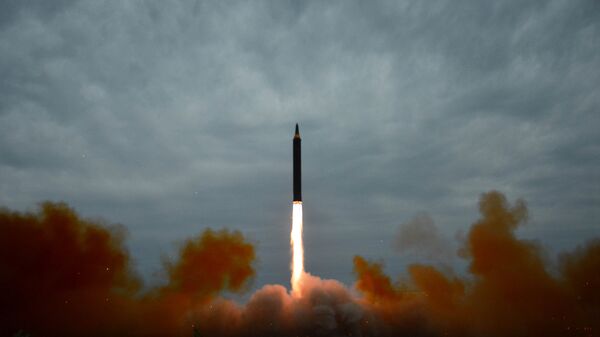Last week the Trump administration requested $4 billion from Congress for the increased use of cyber weapons to jam North Korean control systems and prevent the launch of missiles, for fleets of missile-firing drones and fighter planes to shoot them down moments after liftoff.
Pentagon officials, top scientists and lawmakers see these measures as a response to Pyongyang’s fast-developing ballistic missile capability, which poses a serious risk to US security.
With the wide range of radar and electronic interference operations the US has been using since 2014 to hamper the testing of North Korea’s Musudan intermediate-range missiles showing mixed results, Washington is now contemplating a boost-phase option of having armed drones patrolling the skies over the Sea of Japan and fire heat-sensing rockets to shoot down rising North Korean ICBMs.
According to Massachusetts Institute of Technology professor Theodore A. Postol, fleets of missile-firing drones patrolling near the North Korean border would be extremely intimidating and create new diplomatic leverage.
“We need it now. My concern is that we get something out there quickly that will pressure North Korea to negotiate,” Postol told The NYT.
North Korea has in recent years been investing heavily in the development of long-range ballistic missiles. In July 2017, it tested the Hwasong-14 intercontinental ballistic missile, likely capable of reaching the continental United States, for the first time.
READ MORE: No Proof North Korea Has Nuclear Missile Capable of Striking US Coast
In the most recent case on September 15, North Korea launched a ballistic missile, which flew over northern Japan before plunging into the Pacific.
The launch came just days after the UN Security Council approved sanctions against Pyongyang over its missile and nuclear program.
On September 3, Pyongyang conducted its most powerful ever nuclear test, which many believe to be an H-bomb.
North Korea’s ballistic missile program was one of the primary motives behind the decision to develop and deploy the US Ground-based Midcourse Defense system to protect the US homeland.



